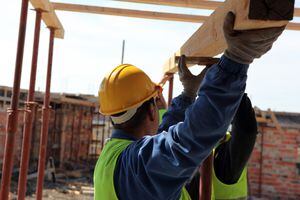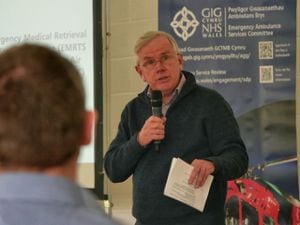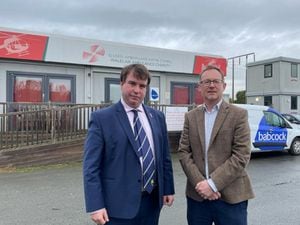Public meeting on future house building sites in Much Wenlock
A public meeting to discuss future house building sites in Shropshire is being held near Much Wenlock today.

Residents including those from neighbouring Cressage are being urged to attend the special consultation event to look at the impact of the Shropshire Local Plan Review. Under the plan the county could get 28,750 new houses by 2036 under a 'high growth' proposal.
The preferred sites for development in this part of the county will be discussed at the session at Priory Hall, in Bull Ring, Much Wenlock from 7pm to 9pm.
It will be hosted by the ward's Shropshire representative Councillor David Turner.
The Much Wenlock Place Plan Area comprises the town, Buildwas, Cressage, and numerous surrounding small villages and hamlets.
Councillor Turner said: "It is imperative that residents attend to learn about what the review contains and to air their views about it.
"This session is also for the people of Cressage which will be affected by the proposals.
"It very important because the local plan will set the blueprint for land development in Shropshire for the next two decades."
Much Wenlock Town Council will also hold a special meeting on January 17 to consider its response to the plan.
Shropshire Council held two consultations in 2017 over its partial review of the Local Plan and tonight's meeting is part of the Preferred Sites consultation which will run from until the end of this month.
If given the go-ahead, the plan will be formally adopted in October 2020.
Meetings next week will include at Festival Drayton, Market Drayton, on January 8th at 7pm; at the Severn Centre, Highley, on January 9 at 6.30pm; Ellesmere Town Hall on January 10 at 7pm; the Civic Centre, Whitchurch, on January 11 at 6.30pm.
The Campaign to Protect Rural England has been critical of the housing figures proposed by Shropshire Council, warning that the amount was a odds with reality.
Shropshire Council said its cabinet had considered a range of options for the scale of future housing growth in the county for the period to 2036 and the majority of councillors on the ruling committee supported ‘moderate’ rather than ‘high’ growth.
It further said that the cabinet nevertheless chose to endorse ‘high growth’ as its preferred option to help to deliver the objectives of its adopted Economic Growth Strategy and Corporate Plan, which seek to tackle some of the key challenges which we face, including access to more affordable housing.
The council said it was duty bound to take into account the wider needs of the entire population and other stakeholders.





